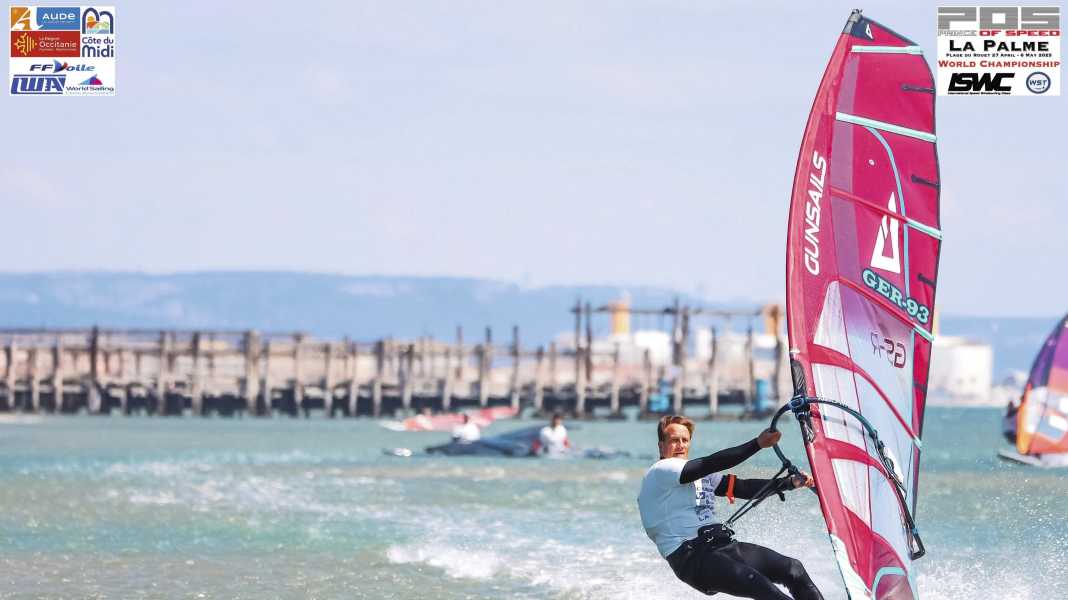Speed surfing: Andy Laufer on the appeal of speed and the right preparation
Stephan Gölnitz
· 19.06.2025

Can you briefly tell us what the technical process was like at the World Cup?
It's actually quite simple. You were given a GPS device in the morning and the organiser read it out in the evening. You surfed in a demarcated area between two virtual measuring points.
What else do you use?
I have a Coros watch. I had a special GPS from Motion - but unfortunately lost it in a catapult last year. You couldn't reorder it back then. The smartwatches are also good, but not quite as accurate, I think.
What happens when you upload a session from a Garmin, Coros or Apple Watch?
If you do this with gps-speedsurfing.com uploads, the programme checks the file and recognises even small errors. I've already seen social media postings of watches - a PWA rider with a top speed of 48 knots during a slalom in Tenerife, for example. "Sporty speed", I thought. But if the software at gps-speedsurfing.com then calculates "only" 39 to 40 knots over 100 metres during such a session, the system notices the error and adjusts it.
What are your most relevant speed events of the year?
In any case Lüderitz (Ed.: Speed channel in Namibia in November) and the Speed World Championships. Last year, when I could only see the pictures from Namibia, I immediately got the urge to go again. Let's see if I'll go again this year - also because I'm really fit from training after my injury. Then there's the German Tour and the DM on Fehmarn. But there's always seaweed there, so I'm not up for that.
The fin is the most important part of the material at the beginning. Then you can become very fast on downwind courses even with a camberless sail."
What equipment do you need if you want to get into GPS speed surfing?
First a suitable watch or app. You can surf on any equipment. I started again after my knee injury on my wife's freerider. They're not slow, it's about two or three knots. But you need a fast fin, not a thick standard GRP fin. The fin is the most important piece of equipment to start with. Then you can also become very fast with a camberless sail on a crosswind course. I surfed 37 knots with a 110-litre freerider, a 7.2 camberless sail and a 37 mm fin.
How important is the weight, do you have any chance at all under 90 kilos or can you compensate for this with suitable material?
Quite a bit. A young Frenchman, Brendan Lorho, has just finished third. He weighs 84 kilos when it comes down to it. But in Namibia I also put 15 or 16 kilos on my back. That alone wears you out in the evening.
Is there special training for speading?
I practise slingshots, i.e. dropping and accelerating - not too fast, not too slow, so that the current doesn't break. On a course like a speeding bullet.
What do you recommend for fitness training?
Core training is extremely important. Since my injury, I've been going to the gym, mainly working on my stomach and legs. Also skiing, lots of skating, lots of tennis. Legs and core (Editor: Trunk muscles) are the most important thing, you have to be able to transfer the pressure to the board.
For me, speed surfing was a new start, a second career."
There are different ratings, for example the average over 500 metres or over 10 seconds, what is the most prestigious for you?
I like the top speed classification best. In the Speed Kini, there was the sum of top speed and over the 500 metres, which was also fun.
What is the attraction after 40 years of regatta surfing?
You always have your watch with you, that's always motivation, an incentive. When there's less wind, you just try to do 37 or 38 knots. For me, speed surfing was a new start, a second career. It's just fun, as it was again at the event. There was sunshine, cool people and a cool mix of all age groups. At the top of the podium was Albeau, just a little younger than me, second was Vincent Valkenaers at 28 and third-placed Brendan Lorho is only 19. There are almost three generations at the top and they are all fighting for the same goal.
More about speed surfing:
- These are the speed records in windsurfing
- The best tips for speed windsurfing from Andy Laufer
- From building contractor to speed surfer: how Andrea "Principe" Baldini became the "Prince of Speed"
- Speed surfing: "The ultimate goal is 100 km/h" - Interview with Antoine Albeau
- Jenna Gibson on the Lüderitz Speed Challenge and her world record
- "Speed is like ski jumping" - Interview with Gunnar Asmussen

